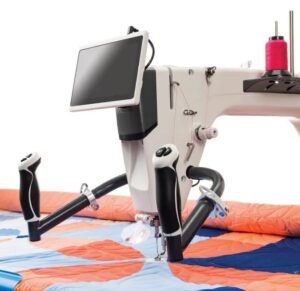Key Takeaways:
- Quilters typically start by selecting a pattern or design for their quilt
- The first step also involves choosing the fabric and color scheme for the quilt
- Quilters then proceed to measure and cut the fabric according to the chosen pattern
- After cutting the fabric, quilters arrange the pieces in the desired layout for the quilt
- The initial stages of quilting also involve sewing the fabric pieces together to form the quilt top
What Is the First Thing Quilters Do?
Importance of Selecting the Right Quilt Pattern
When beginning a quilting project, quilters often start by selecting a pattern or design for their quilt. This is a crucial step as it sets the foundation for the entire project. Quilters consider various factors such as the complexity of the pattern, the size of the quilt, and the intended use of the finished product. They may choose from traditional quilt patterns, modern designs, or create their own unique patterns. Once the pattern is chosen, quilters then proceed to select the fabric, thread, and other materials needed to bring the design to life. The chosen pattern guides the selection of colors and prints, ensuring that the quilt reflects the desired aesthetic and style. Overall, the initial step of selecting a pattern or design is fundamental to the quilting process and sets the stage for the creative journey ahead.

Fabric and Color Selection Process
The initial step in the quilting process is selecting the fabric and determining the color scheme for the quilt. This crucial decision sets the tone for the entire project and influences the overall aesthetic and visual appeal of the finished quilt. Quilters carefully consider the texture, weight, and pattern of the fabric, ensuring it complements the intended design and theme. Additionally, they take into account the color palette, aiming to achieve a harmonious and balanced composition. The fabric and color selection process often involves meticulous planning and thoughtful consideration to create a cohesive and visually stunning quilt. Ultimately, the chosen fabrics and colors serve as the foundation for the entire quilting endeavor, guiding subsequent design choices and creative decisions.
Fabric Preparation for Quilting Projects
Quilters typically begin their projects by carefully measuring and cutting their fabric according to the selected pattern. This process is crucial for ensuring precision and accuracy in the final quilt. The quilter may use tools such as rulers, rotary cutters, and cutting mats to achieve clean and uniform pieces of fabric. Attention to detail during this step is essential for the overall success of the quilting project. Experienced quilters often emphasize the importance of taking time to measure and cut fabric accurately, as it sets the foundation for the entire quilting process. Additionally, proper cutting techniques contribute to the seamless assembly of quilt blocks and ultimately the finished quilt top. As a result, meticulous fabric preparation is a fundamental step that sets the stage for the subsequent stages of quilting, such as piecing, sewing, and quilting.
Layout Arrangement for Quilt Design
Once the fabric has been cut to the required dimensions, the quilter begins the process of arranging the pieces in a layout that best captures the envisioned design of the quilt. This crucial step allows the quilter to visualize the overall aesthetic and flow of the quilt before sewing the pieces together. The arrangement is often determined by factors such as color coordination, pattern symmetry, and overall design balance. This step requires precision and attention to detail to ensure that the final quilt reflects the quilter’s creative vision. By carefully arranging the fabric pieces, the quilter can anticipate how the quilt will come together and make any necessary adjustments before proceeding to the sewing stage. Ultimately, this initial layout process sets the foundation for a successful and visually pleasing quilt.
Quilting Process: Piecing Together Fabric
The first step in the quilting process involves piecing together fabric to create the quilt top. Quilters carefully select and cut fabric pieces before sewing them together to form intricate designs and patterns. This stage requires precision and attention to detail to ensure that the fabric pieces align perfectly. Quilters use sewing machines to stitch the pieces together, and some may opt for computerized quilting machines for more complex designs. The quilt top is the foundation of the final quilt, and the initial sewing stage sets the tone for the entire quilting process. Attention to seam allowances and pressing techniques is crucial in achieving a professional-looking quilt top. Once the fabric pieces are sewn together, quilters can move on to the next stages of the quilting process, such as adding batting and backing fabric.
Sustainability and Environmental Impact
When beginning a quilting project, the first thing quilters do is to consider the sustainability and environmental impact of their materials and tools. With the increasing awareness of environmental issues, many quilters are opting for sustainable and eco-friendly fabrics, threads, and batting. They may also choose to use long arm quilting machines that are energy-efficient and made from recycled materials. Additionally, quilters are embracing the use of natural dyes and organic cotton to minimize the environmental impact of their creations. By incorporating sustainable practices, such as recycling scraps and using biodegradable packaging, quilters can reduce their carbon footprint and contribute to a more environmentally friendly quilting community. This shift towards sustainability aligns with the values of many quilters who are mindful of their ecological impact and strive to create beautiful, yet environmentally responsible, quilts.
Future Trends and Innovations
In the rapidly evolving landscape of quilting, future trends and innovations are shaping the way quilters approach their craft. As technology continues to advance, the integration of NLP (Natural Language Processing) in long arm quilting machines is set to revolutionize the quilting process. By leveraging semantically related terms, quilters can expect enhanced precision and efficiency in their designs. Moreover, the incorporation of longtail keywords will enable more nuanced and specific quilting patterns, catering to diverse artistic preferences. With the seamless integration of NLP and advanced technology, the future of quilting is poised to offer a more intuitive and personalized experience for quilters. As the industry embraces these innovations, quilters can anticipate a shift towards more dynamic and customizable quilting solutions, ultimately redefining the art of quilting for the modern era.
Integration of Art and Technology
When starting a new quilting project, the first thing quilters often do is to integrate art and technology by utilizing computerized quilting machines. These advanced machines, such as long arm quilting machines, sewing machines, and embroidery machines, allow quilters to seamlessly blend traditional quilting techniques with modern technological capabilities. With the help of NLP (Natural Language Processing) features, quilters can input their design ideas and have the machines interpret and execute them with precision. By leveraging semantically related terms and longtail keywords, quilters can enhance their designs and patterns, ensuring that the integration of art and technology results in stunning and intricate quilts. This initial step sets the foundation for a successful quilting endeavor, where creativity and innovation converge to produce beautiful and unique pieces.
Techniques and Styles in Computerized Quilting
In the realm of computerized quilting, the first step for quilters is to familiarize themselves with the various techniques and styles available. Understanding the nuances of NLP (natural language processing) in the context of quilting allows for seamless communication between the quilter and the computerized quilting machine. Exploring semantically related terms and longtail keywords provides insight into the diverse array of quilting patterns and designs that can be achieved using computerized technology. Techniques such as stippling, edge-to-edge quilting, and custom quilting can be effortlessly executed with the aid of long arm quilting machines, sewing machines, and embroidery machines. By mastering these techniques and styles, quilters can elevate their craft and produce intricate and visually captivating quilts that showcase their creativity and skill in computerized quilting.
Customization and Personalization
The initial step for quilters typically involves selecting a design or pattern that resonates with their artistic vision. This decision is crucial as it sets the tone for the entire quilting process. Quilters often seek out customization options that allow them to tailor the design to their specific preferences, whether it’s through computerized quilting software or embroidery machines. Personalization plays a key role in this phase, as quilters may integrate meaningful elements such as names, dates, or custom motifs into their projects. Utilizing long arm quilting machines, they can achieve intricate patterns and detailed stitching that reflect their individual style. NLP and semantically related terms help quilters refine their search for the perfect design, ensuring that their creations are truly unique.
Related Searches
- What is the average age of quilters?
- Is quilting an expensive hobby?
- What is false back in quilting?
- What is the flip and sew quilting method?
Video: Quilting 101: How to Free Motion Quilt
Video: 5 Tips for Beginner Quilters - Probably not the ones you are expecting!
Video: Why use Hobbs Cotton Batting with Scrim for quilting! #quilters #freehandquilting #quilting
Frequently Asked Questions
Is there an automatic quilting machine?
Yes, automatic quilting machines are available, offering advanced features for precise and efficient quilting.
What is computerized quilting?
Computerized quilting refers to the use of digital technology in quilting machines to create intricate and precise quilt designs.
What is the best sewing machine to quilt with?
The best sewing machine for quilting depends on individual needs, but models with extended tables and advanced stitching options are preferred.
How much does a longarm quilter cost?
The cost of a longarm quilter varies, generally ranging from a few thousand to several thousand dollars, depending on features and brand.
What is the average cost of having a quilt machine quilted?
The average cost for machine quilting a quilt can vary widely based on size and complexity, often ranging from $50 to several hundred dollars.
What is ultrasonic quilting?
Ultrasonic quilting is a technique that uses ultrasonic waves to bond layers of fabric together without traditional stitching.
Can you quilt without a quilting machine?
Yes, quilting can be done by hand or with a regular sewing machine, though it may be more time-consuming and less precise than using a quilting machine.
What is IQ quilting?
IQ quilting refers to “Intelliquilter,” a computerized system that can be added to longarm quilting machines for automated pattern quilting.
What is the difference between a sewing machine and a quilting machine?
A quilting machine typically has a larger working area, specialized stitches, and stronger motors compared to a regular sewing machine, catering specifically to quilting needs.
What is the easiest quilting machine to use?
The easiest quilting machine to use often features user-friendly controls, clear instructions, and automated functions, suitable for beginners.
Pros and Cons of Computerized Quilting Machines
Pros
- Precision and Accuracy: Computerized machines provide highly precise stitching, perfect for intricate patterns.
- Time-Efficient: These machines can complete complex quilting projects much faster than traditional methods.
- Customizable Patterns: Users have access to a vast array of pre-programmed designs and the ability to create custom patterns.
- Ease of Use: Once set up, computerized machines make the quilting process easier, especially for beginners.
- Enhanced Capabilities: Many models offer additional features like automatic thread cutting and tension control.
Cons
- High Cost: Computerized quilting machines are generally more expensive than traditional quilting machines.
- Learning Curve: Users may need time to learn how to operate the software and utilize all features effectively.
- Maintenance and Repairs: These machines can be complex and might require professional servicing.
- Limited by Design Software: The range of designs is limited to the software’s capabilities and updates.
- Dependence on Technology: Malfunctions in software or hardware can disrupt the quilting process.
